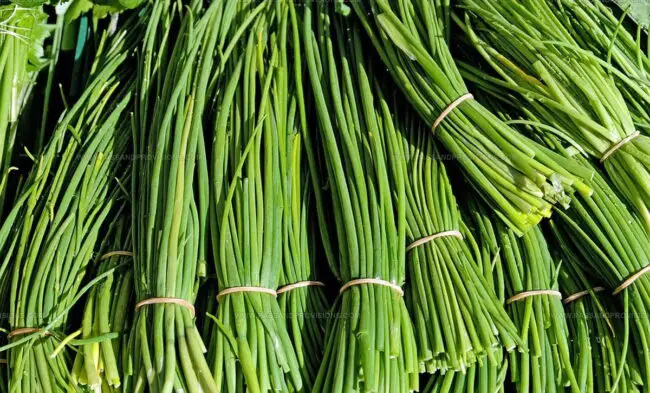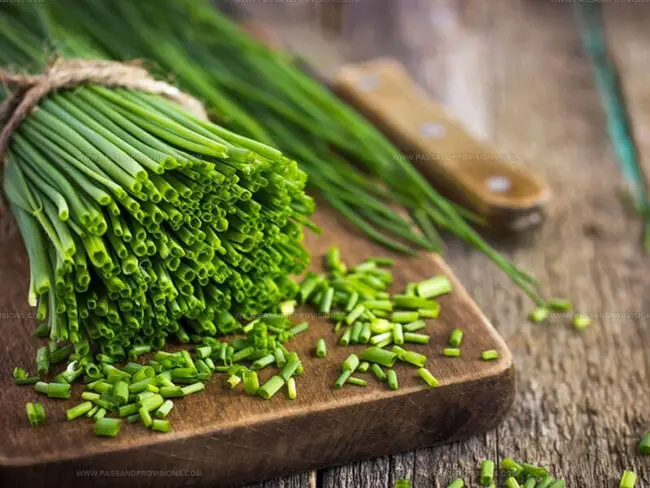What Do Chives Taste Like? Mild Onion Zing in Every Bite!
Chives, those slender green herbs often sprinkled atop dishes, carry a fascinating culinary secret that many home cooks wonder about.
Their delicate appearance might trick you into overlooking their true flavor profile.
Mild yet distinctive, these slender green stems belong to the allium family and pack more complexity than most people realize.
Professional chefs appreciate chives for their nuanced taste that can transform ordinary meals into extraordinary experiences.
Wondering how these tender herbs might enhance your cooking? Understanding their unique flavor can elevate your kitchen skills and make your dishes more interesting.
Your next meal could be just a sprinkle of chives away from becoming something memorable.
What Are Chives?
Chives come from the same plant group as onions and garlic: the allium family.
People have used them in Europe for hundreds of years, and now they grow on different continents.
Chive plants have tasty leaves and flowers, with stems reaching up to 6 inches long and hollow centers that look like straws inside.
People love these herbs because they work well in many dishes.
Chives pop up early in spring and grow easily, making them perfect for adding to garden spaces.
Some people might not pay much attention to chives because their plant relatives often seem more interesting.
Chives actually have a milder flavor compared to other plants in their family.
Someone wanting to understand chive taste should try cooking them.
Heat helps bring out their onion-like flavor, making the taste stronger and more enjoyable when warmed up.
Taste of Chives
Chives carry a taste similar to raw onions, but much gentler. Their onion-like flavor stands out more when eaten fresh (a detail people often miss) compared to when cooked or mixed into sauces.
Cooks typically slice green leaves into tiny pieces and mix them into dishes or raw dips, but they work well in many cooking methods.
Chives offer a subtle yet pleasant flavor, making them a helpful kitchen friend.
People can eat them like green onions, though they feel slightly crunchier. Multiple foods pair nicely with chives, and anyone who dislikes their taste can swap in green onions instead.
People might think all chives look alike, but several herb types exist:
Chives Texture Guide
Chives work well in many different meals.
These green herbs have a slight crunch similar to peas, whether you use them fresh or dried.
Dried chives feel more crumbly, while fresh chives provide a juicier snap that brings back memories.
Cutting chives super thin helps you enjoy them best.
Smaller pieces become almost invisible in your mouth and seem to melt away.
People worried about not having chives can relax.
Many other ingredients work as good replacements.
Regular onions make an excellent substitute.
Small amounts of chopped chives can boost meal flavor, and just a few leaves add a mild onion-like taste.
People should watch their cooking temperature because high heat can ruin chives' delicate flavor.
Are Chives the Same as Green Onion Tops?
Green onions have a green part that might look like chives, but they are actually different.
Chives and the green section of onions seem alike, yet they have distinct characteristics.
People often use the white part of green onions in cooking, but the pale green section works well in many dishes too.
This green section offers a crisp texture and can be enjoyed raw or cooked.
Cooks should know that different parts of an onion work best when added at specific moments during meal preparation.
Each part brings unique qualities to recipes, creating depth and variety in flavors.
Chives stand out with their longer, skinnier stems.
These herbs appear more delicate and tender compared to green onion sections.
While they might look similar at first, closer inspection reveals clear differences between these two green ingredients.
Do Chives and Green Onions Taste Alike?
Chives and green onions look different and taste unique.
Green onions sport wider stems with a white bottom part, while chives show up as slender green stalks from top to bottom.
Green onions work well in many dishes and come in different lengths.
People can munch on them raw or slice them small for cooking.
Cooks often mix the green tips with white sections similar to regular white onion.
Chives pack a much stronger punch compared to green onions.
Their taste hits harder and carries a more intense smell that stands out in recipes.
How to Grow Chives
These plants are easy to grow during spring or fall seasons.
Grow Them Inside
Chive seeds rest comfortably under 1-2 inches of soil inside their container.
Sunlight helps these herbs grow strong, and water keeps them healthy.
Choose a spot with plenty of sunshine and make sure the soil stays moist but not soaked.
How To Plant Them Outdoors
You need a spot with lots of direct sun for chives.
Dig a hole about 6 inches deep, then carefully add 1-2 inches of soil and water the plants consistently.
How to Tell If Chives Are Good to Eat
Chives can go bad even with proper storage.
You might wonder how to tell if they're safe to eat after spoiling.
We care about your health and want to help you spot spoiled chives in your kitchen.
Our guide will show you simple ways to check if your chives are still good.
Let's check it out:
Ways to Eat Chives
Dried chives work well as a substitute for fresh chives.
Small but mighty, these herbs belong to the onion family and show up often in kitchen recipes.
Busy cooks can quickly snip chives using a food chopper.
Grocery stores stock these herbs, making them simple to find.
Dried chives offer a convenient alternative when fresh ones are not available.
Members of the Alliaceae family, chives bring a light, gentle taste to dishes.
People love using them as a garnish because of their subtle flavor.
Chives blend nicely into many recipes, replacing onions in soups and stews.
Cooks should remember that while chives work great in many dishes, they won't deliver the same deep flavor as regular onions.
How to Store Chives
Chives stay fresh in refrigerators for one week when wrapped in paper towels and sealed inside plastic bags.
Kitchen cooks can also stand chive stems in water-filled jars with plastic bag covers.
Washing works best right before cooking since moisture makes chives break down faster.
People can save chives by freezing whole bundles.
Stack chive groups inside zip-close bags.
Cooks simply cut frozen chives and add them to dishes as needed.
Herb lovers preserve chives and their blossoms by making special butter, wrapping it in wax paper, and freezing.
Chefs can slice off butter pieces for recipes later.
Another simple method involves cutting chive pieces into ice cube trays with water or oil.
Freezing creates convenient herb cubes for future cooking.


